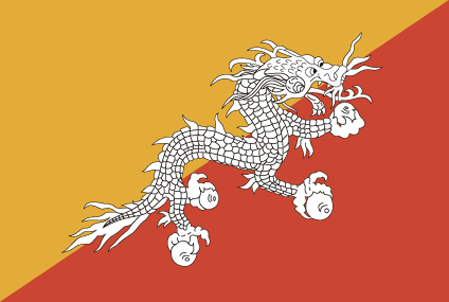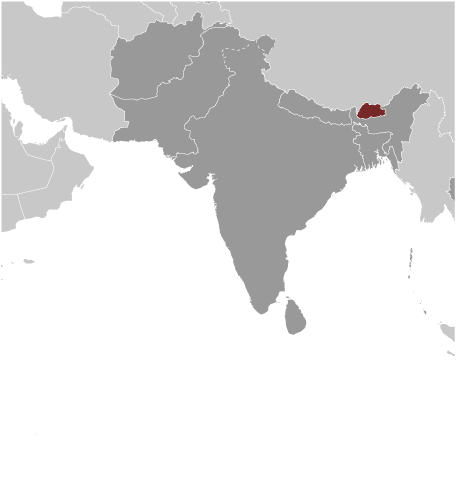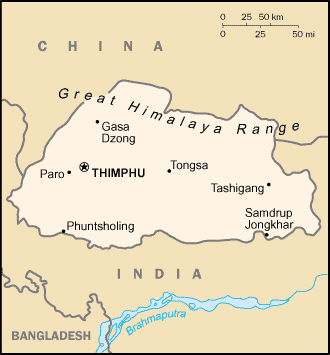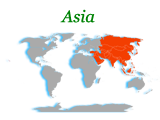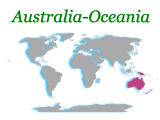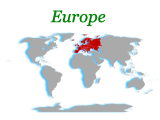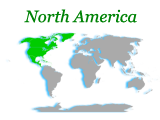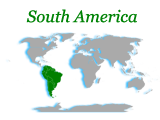In 1865, Britain and Bhutan signed the Treaty of Sinchulu, under which Bhutan would receive an annual subsidy in exchange for ceding some border land to British India. Under British influence, a monarchy was set up in 1907; three years later, a treaty was signed whereby the British agreed not to interfere in Bhutanese internal affairs and Bhutan allowed Britain to direct its foreign affairs. This role was assumed by independent India after 1947. Two years later, a formal Indo-Bhutanese accord returned the areas of Bhutan annexed by the British, formalized the annual subsidies the country received, and defined India's responsibilities in defense and foreign relations. A refugee issue of over 100,000 Bhutanese in Nepal remains unresolved; 90% of the refugees are housed in seven United Nations Office of the High Commissioner for Refugees (UNHCR) camps. In March 2005, King Jigme Singye WANGCHUCK unveiled the government's draft constitution - which would introduce major democratic reforms - and pledged to hold a national referendum for its approval. In December 2006, the King abdicated the throne to his son, Jigme Khesar Namgyel WANGCHUCK, in order to give him experience as head of state before the democratic transition. In early 2007, India and Bhutan renegotiated their treaty to allow Bhutan greater autonomy in conducting its foreign policy, although Thimphu continues to coordinate policy decisions in this area with New Delhi. In July 2007, seven ministers of Bhutan's ten-member cabinet resigned to join the political process, and the cabinet acted as a caretaker regime until democratic elections for seats to the country's first parliament were completed in March 2008. The king ratified the country's first constitution in July 2008.
Population
699,847
Country comparison to the world: 164
note:the Factbook population estimate is consistent with the first modern census of Bhutan, conducted in 2005; previous Factbook population estimates for this country, which were on the order of three times the total population reported here, were based on Bhutanese government publications that did not include the census (July 2010 est.)
Nationality
Noun:Bhutanese (singular and plural)
Adjective:Bhutanese
Ethnic groups
Bhote 50%, ethnic Nepalese 35% (includes Lhotsampas - one of several Nepalese ethnic groups), indigenous or migrant tribes 15%
Religions
Lamaistic Buddhist 75%, Indian- and Nepalese-influenced Hinduism 25%
Languages
Dzongkha (official), Bhotes speak various Tibetan dialects, Nepalese speak various Nepalese dialects
Country Name
Conventional long form:Kingdom of Bhutan
Conventional short form:Bhutan
Local long form:Druk Gyalkhap
Local short form:Druk Yul
Government Type
constitutional monarchy
Capital
Name:Thimphu
Geographic coordinates:27 29 N, 89 36 E
Time difference:UTC+6 (11 hours ahead of Washington, DC during Standard Time)
Administrative divisions
20 districts (dzongkhag, singular and plural); Bumthang, Chhukha, Chirang, Daga, Gasa, Geylegphug, Ha, Lhuntshi, Mongar, Paro, Pemagatsel, Punakha, Samchi, Samdrup Jongkhar, Shemgang, Tashigang, Tashi Yangtse, Thimphu, Tongsa, Wangdi Phodrang
Independence
1907 (became a unified kingdom under its first hereditary king)
National Holiday
National Day (Ugyen WANGCHUCK became first hereditary king), 17 December (1907)
Constitution
ratified 18 July 2008
Legal system
based on Indian law and English common law; has not accepted compulsory ICJ jurisdiction
Suffrage
18 years of age; universal
Executive branch
Chief of state:King Jigme Khesar Namgyel WANGCHUCK (since 14 December 2006); note - King Jigme Singye WANGCHUCK abdicated the throne on 14 December 2006 and his son immediately succeeded him; the nearly two-year delay between the former King's abdication and his son's coronation on 6 November 2008 was to ensure an astrologically auspicious coronation date and to give the new king, who had limited experience, deeper administrative expertise under the guidance of this father
Head of government: Prime Minister Jigme THINLEY (since 9 April 2008)
Cabinet:Council of Ministers (Lhengye Shungtsog) nominated by the monarch, approved by the National Assembly; members serve fixed, five-year terms; note - there is also a Royal Advisory Council (Lodoi Tsokde); members are nominated by the monarch
(For more information visit the World Leaders website)
Elections:the monarchy is hereditary, but democratic reforms in July 1998 grant the National Assembly authority to remove the monarch with two-thirds vote; election of a new National Assembly occurred in March 2008; the leader of the majority party nominated as the prime minister
Legislative branch
bicameral Parliament consists of the non-partisan National Council (25 seats; 20 members elected by each of the 20 electoral districts (dzongkhags) for four-year terms and 5 members nominated by the King); and the National Assembly (47 seats; members elected by direct, popular vote for five-year terms)
Elections:National Council elections last held on 31 December 2007 and 29 January 2008 (next to be held by December 2012); National Assembly elections last held on 24 March 2008 (next to be held by March 2013)
Election results: National Council - NA; National Assembly - percent of vote by party - DPT 67%, PDP 33%; seats by party - DPT 45, PDP 2
Judicial branch
Supreme Court of Appeal (the monarch); High Court (judges appointed by the monarch); note - the draft constitution establishes a Supreme Court that will serve as chief court of appeal
Political Parties and Leaders
Bhutan Peace and Prosperity Party (Druk Phuensum Tshogpa) or DPT [Jigme THINLEY]; People's Democratic Party or PDP [Tshering TOBGAY]
Political pressure groups and leaders
United Front for Democracy (exiled); Druk National Congress (exiled)
other:Buddhist clergy; ethnic Nepalese organizations leading militant antigovernment campaign; Indian merchant community
International organization participation
ADB, BIMSTEC, CP, FAO, G-77, IBRD, ICAO, IDA, IFAD, IFC, IMF, Interpol, IOC, IOM (observer), ISO (correspondent), ITSO, ITU, NAM, OPCW, SAARC, SACEP, UN, UNCTAD, UNESCO, UNIDO, UNWTO, UPU, WCO, WFTU, WHO, WIPO, WMO, WTO (observer)
Diplomatic representation in the US
none; note - the Permanent Mission to the UN for Bhutan has consular jurisdiction in the US; the permanent representative to the UN is Daw PENJO; address: 763 First Avenue, New York, NY 10017; telephone [1] (212) 682-2268; FAX [1] (212) 661-0551
consulate(s) general: New York
Diplomatic representation from the US
the US and Bhutan have no formal diplomatic relations, although informal contact is maintained between the Bhutanese and US Embassy in New Delhi (India)
Flag description
divided diagonally from the lower hoist-side corner; the upper triangle is yellow and the lower triangle is orange; centered along the dividing line is a large black and white dragon facing away from the hoist side
